The Stones of Manchester
- Paul Dobraszczyk
- Jun 20, 2018
- 5 min read
Updated: Jun 12, 2020

This month, I’ve finally published a website I’ve been building since February called The Stones of Manchester. It’s a photographic record I’ve created mainly over the last year of the metropolitan region of Greater Manchester in the northwest of England, where I’ve been living now for nearly 8 years, and which at 493 square miles is almost as large as Greater London. Created in 1974 as one of six metropolitan counties in the UK, Greater Manchester is made up of ten metropolitan boroughs: Bolton, Bury, Oldham, Rochdale, Stockport, Tameside, Trafford and Wigan, and the cities of Manchester and Salford. Over 2.6 million people live within its borders.

The Metropolitan County of Greater Manchester
Like many people living in Greater Manchester, I had little knowledge of the urban region outside the city centre and where I live in Stockport. For me, the desire to explore further was tied up with two things. First, the suicide bombing attack on the Manchester Arena on 22 May 2017, which left 22 dead, half of whom were children, and 139 injured; and second, the ongoing transformation of the centre of Manchester and Salford that is seeing dozens of new luxury residential towers being constructed alongside a very conspicuous rise in the number of homeless people on the city’s streets.
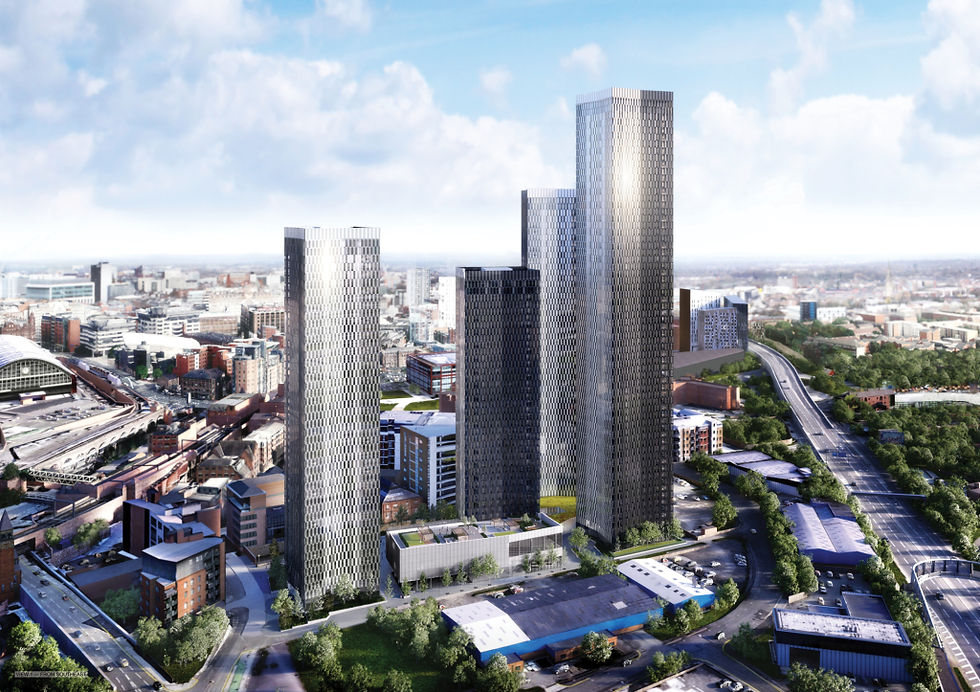
Architects’ rendering of cluster of towers on Owen Street, currently under construction
The morning after the terrorist attack, I visited the city centre with a friend and found myself caught up in the international media attention Manchester was receiving. In the days that followed, there were insistent calls for unity, for Mancunians of every persuasion to be strong and stand together against an ideology that sought to create fear and division. Like so many others, I was left wondering what my part in this might be, how I might deal with that sense of shock and desire for solidarity that comes when an atrocity is carried out close to where you live.

Policemen on New Cathedral Street, the morning after the Manchester Arena attack on 22 May 2017
At the same time, I felt strongly that how the centre of Manchester was being transformed at the time of the attack grated with this call for collective unity. All around the centre, new luxury towers spoke of the city as place for the wealthy – a deliberate turning away from Manchester’s long-standing reputation as one of the poorest cities in the UK. As if to confirm this, the streets of the city centre were increasingly drawing in those who were homeless – a dystopian counter to this image of luxury and exclusivity. I knew that this didn’t represent what I’d already seen outside the city centre, but I wanted to explore this more fully to find out what really unifies the wider urban region. And I would do this by walking as much as was possible and recording the buildings I encountered through photographs. For me, buildings in cities are just as important as people because they are the anchor points where communities form and flourish. They also embody collective values about what cities are and what they aspire to be.
85 walks, 320 miles and 9,500 photographs later, I am still feeling overwhelmed by the sheer variety of places, buildings and people I encountered; and the project is still ongoing – there are many places left to explore. Here’s a snapshot of some of the types of buildings and spaces that recurred as I walked and which feature in The Stones of Manchester:
Bees are symbols of civic pride in Manchester that were invented by the Victorians but transformed in the wake of Arena bombing on 22 May 2017 into icons of defiance, unity and strength. A year on from the attack and countless bee stickers now adorn cars and windows, bee tattoos mark bodies, and bee paintings and murals enliven the walls of buildings across the city.

Bee decoration, New Quay Street bridge over the River Irwell, 1870s.
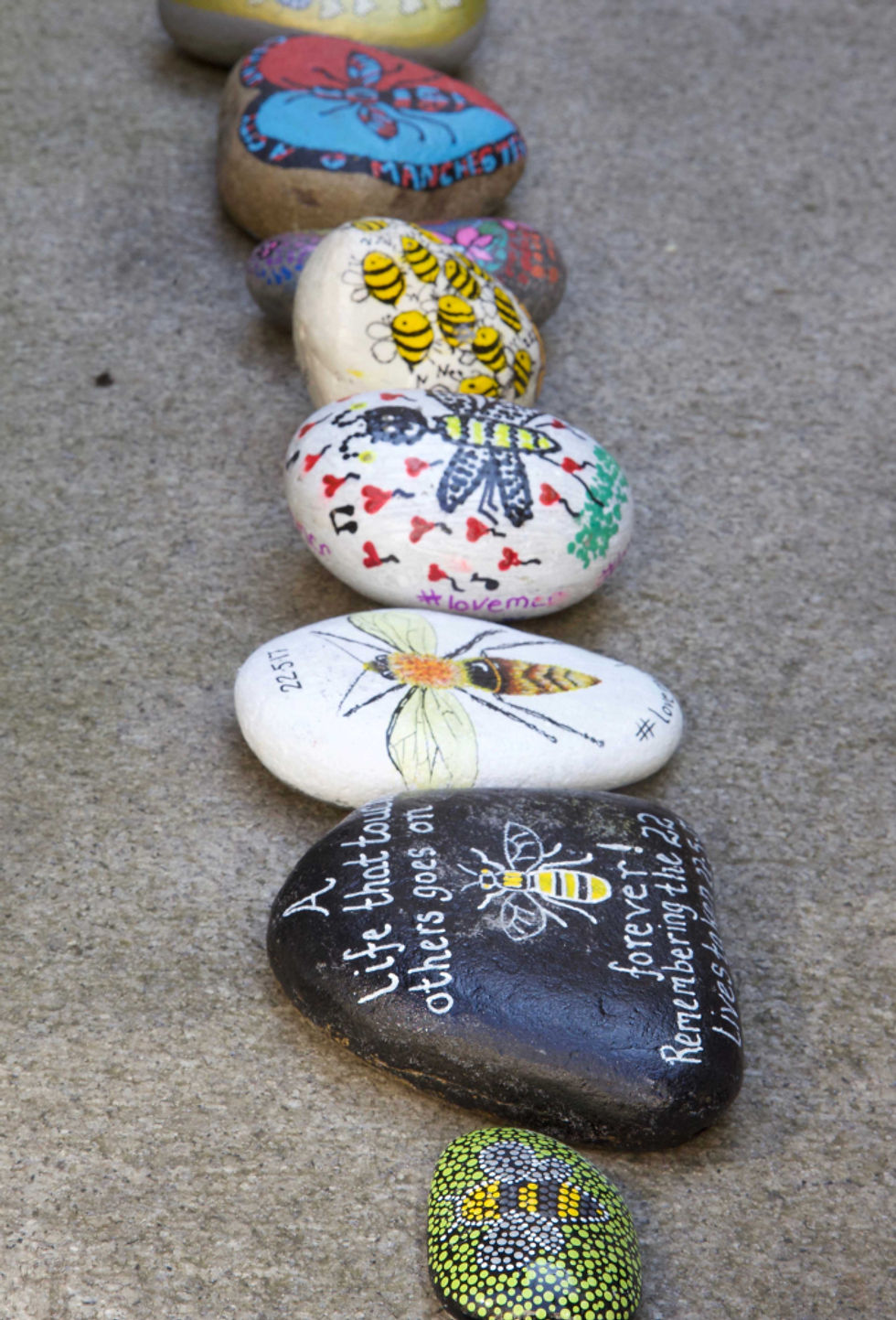
Decorated stones made as memorials to those killed and injured in the bombing of the Manchester Arena on 22 May 2017
Churches
I was struck by the sheer variety of churches in the Greater Manchester region, particularly the range of uses to which these buildings have been put. One of the most impressive is The Monastery in Gorton. Built from 1866-72 and designed by E W Pugin, the building was a Franciscan Friary until 1989. After falling into disrepair, the building was restored and converted into a community hub and events venue and was reopened in 2007. Equally impressive, but in a very different way, is the William Temple Church in Wythenshawe, a fine example of a modern church building that has stood the test of time. Built in 1965 and designed by George Pace, it’s still a thriving church with a beautifully light and airy interior.
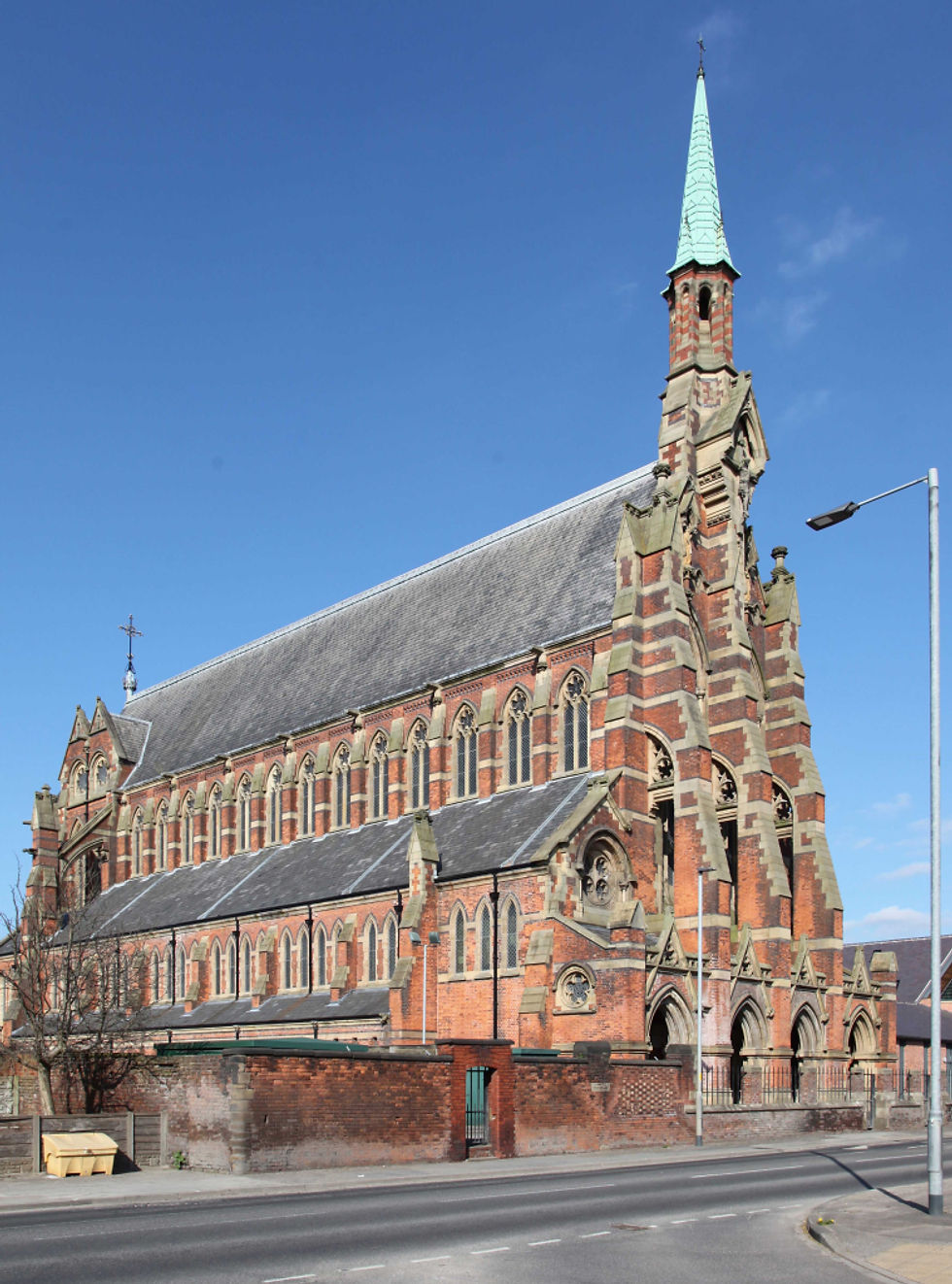
The Monastery, Gorton Lane, Gorton, 1866-72

William Temple Church, Robinswood Road, Wythenshawe, 1965
Co-operative buildings
Throughout my walks, I was amazed to discover a whole family of buildings both fanciful and mundane that developed out of the Co-operative Movement, which began in Rochdale in the 1840s and quickly spread to the whole urban region and far beyond. Usually located in areas of high-density terraced housing, some, like the Co-op building in North Road between Levenshulme and Longsight, were magnificent architectural showpieces; others, like those built earlier on in Saddleworth, were much more restrained.

Beswick Co-operative Society building, North Road, Longsight, 1912
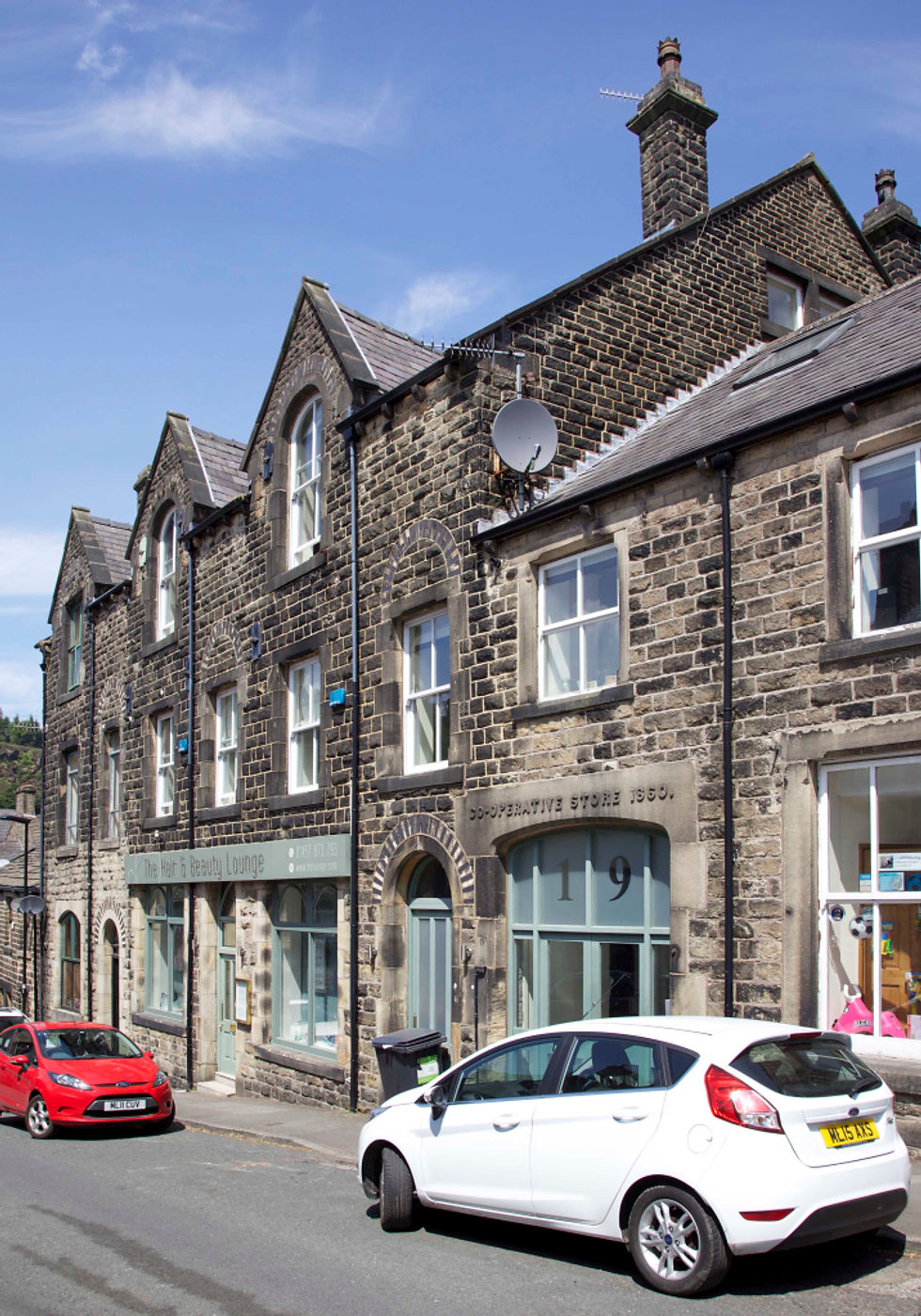
Co-operative Store, Court Street, Uppermill, Saddleworth, 1860
At the height of the industrial period, there were over 2,000 cotton mills in the Greater Manchester region. Today, less than half remain, and since production has now declined to almost zero, many of these magnificent buildings exist now in various stages of dilapidation. Bolton’s Beehive Mills – two enormous cotton mills built at the beginning of the 20th century – testify to the town’s importance in that period; while the earlier Houldsworth Mill in Reddish, Stockport, was part of the philanthropic vision of Henry Houldsworth, who built a whole community to service his mill, including a magnificent church. Sadly, Bolton Council have recently approved the demolition of Beehive mills, as a new use for these gigantic buildings hasn’t yet been found.

Beehive Mills, Crescent Road, Great Lever, Bolton, 1901-02

Houldsworth Mill, Houldsworth Street, Reddish, Stockport, built in 1865 and designed by Abraham Stott
Stained glass
Although Manchester Cathedral contains a rich variety of stained-glass windows, these are mostly abstract in design; by comparison, the extraordinary figures in the dozen or so windows at St Oswald & St Edmund Arrowsmith Catholic church in Ashton-in-Makerfield are a revelation. Created by the Harry Clarke Studio in Dublin in 1930, they represent one of the finest collections of stained glass from that period anywhere in the world – and I found them almost entirely by accident when visiting the town.
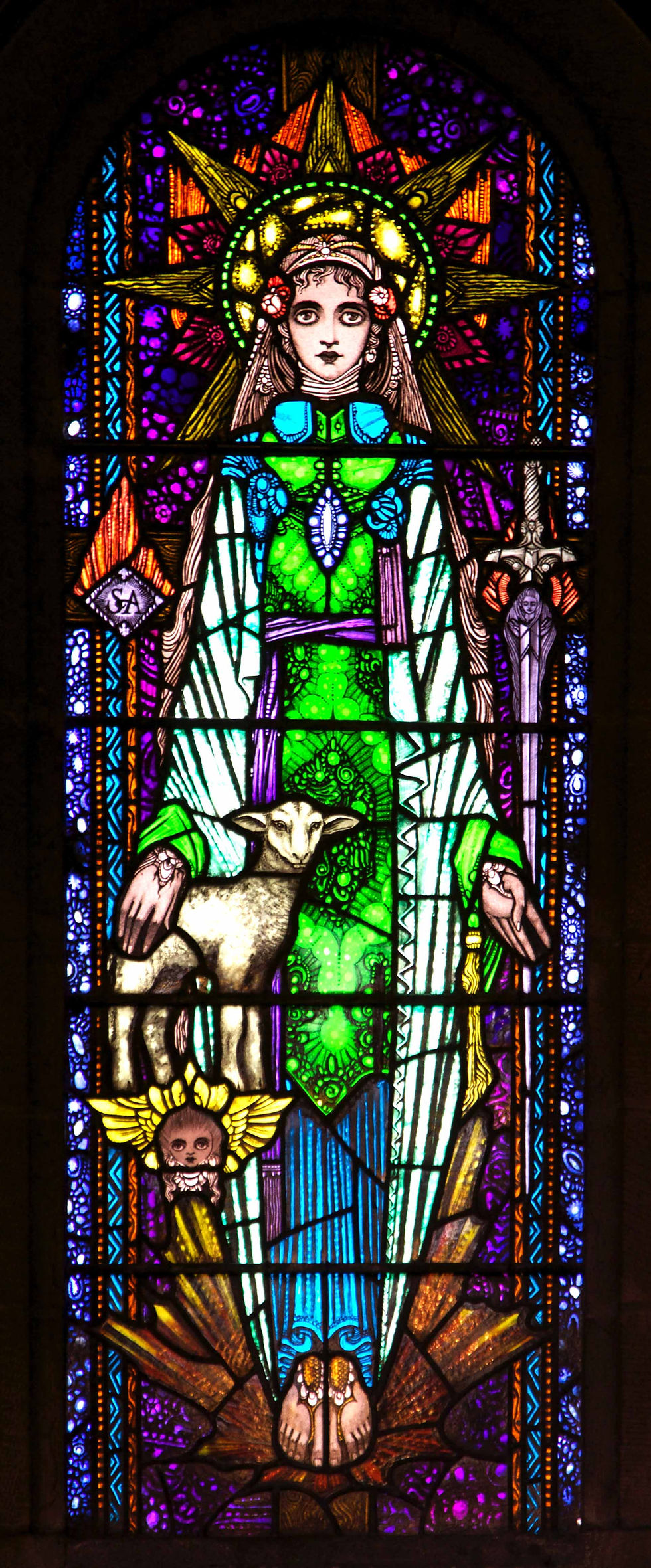
St Agnes window, St Oswald & St Edmund Arrowsmith Catholic church, Liverpool Road, Ashton-in-Makerfield, installed 1930-31
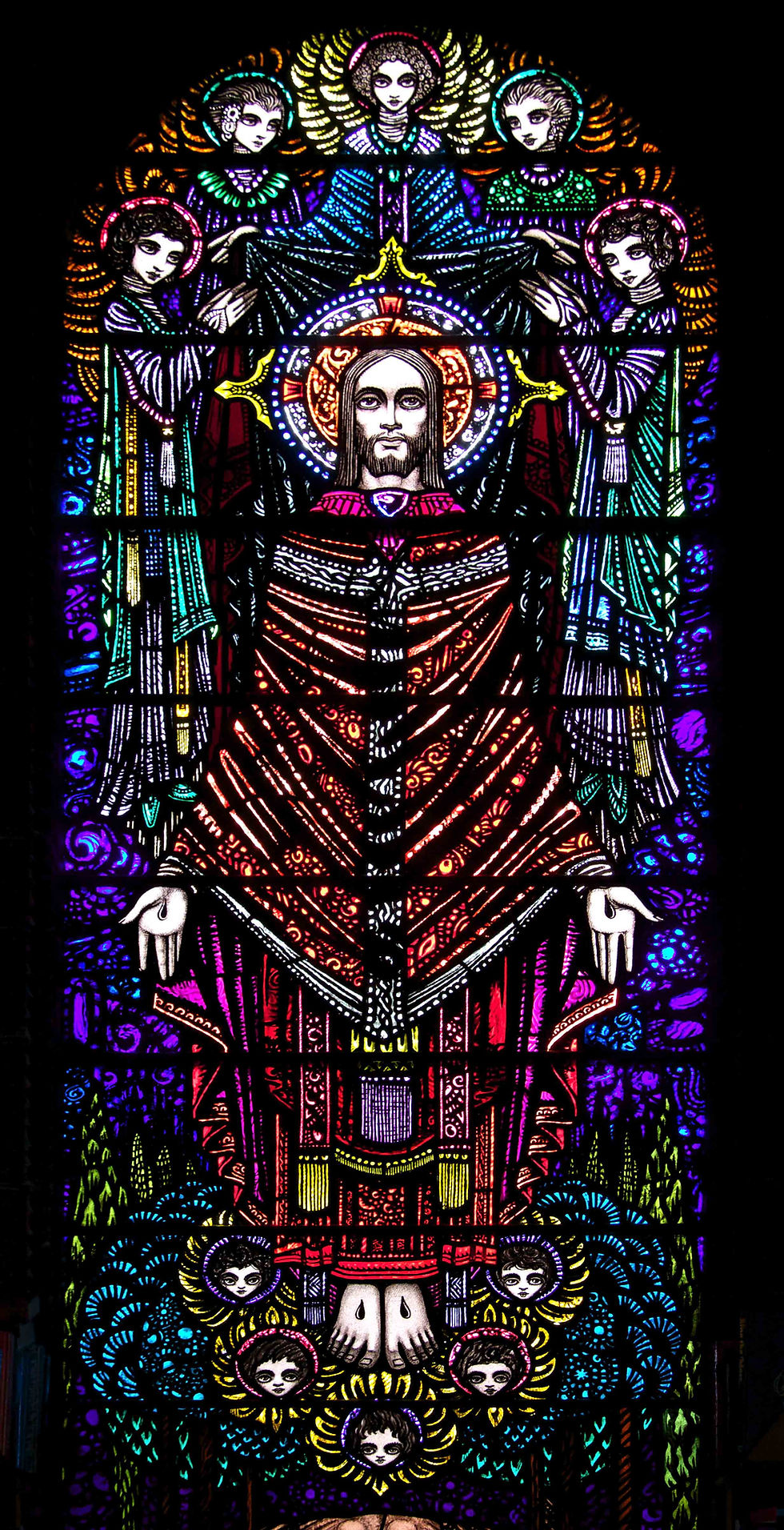
Christ-in-glory window, St Oswald & St Edmund Arrowsmith Catholic church, Liverpool Road, Ashton-in-Makerfield, installed 1930-31
Ubiquitous and monotonous as they may be, terraces nevertheless deserve attention because each has its own history and its own architectural and social value; they are, in a very real sense, the foundational building type of not just Manchester but nearly every British city. Far from being generic, terraces in Manchester display an extraordinary variety of forms that evidence how the city was divided up according to the dictates of economy and class.
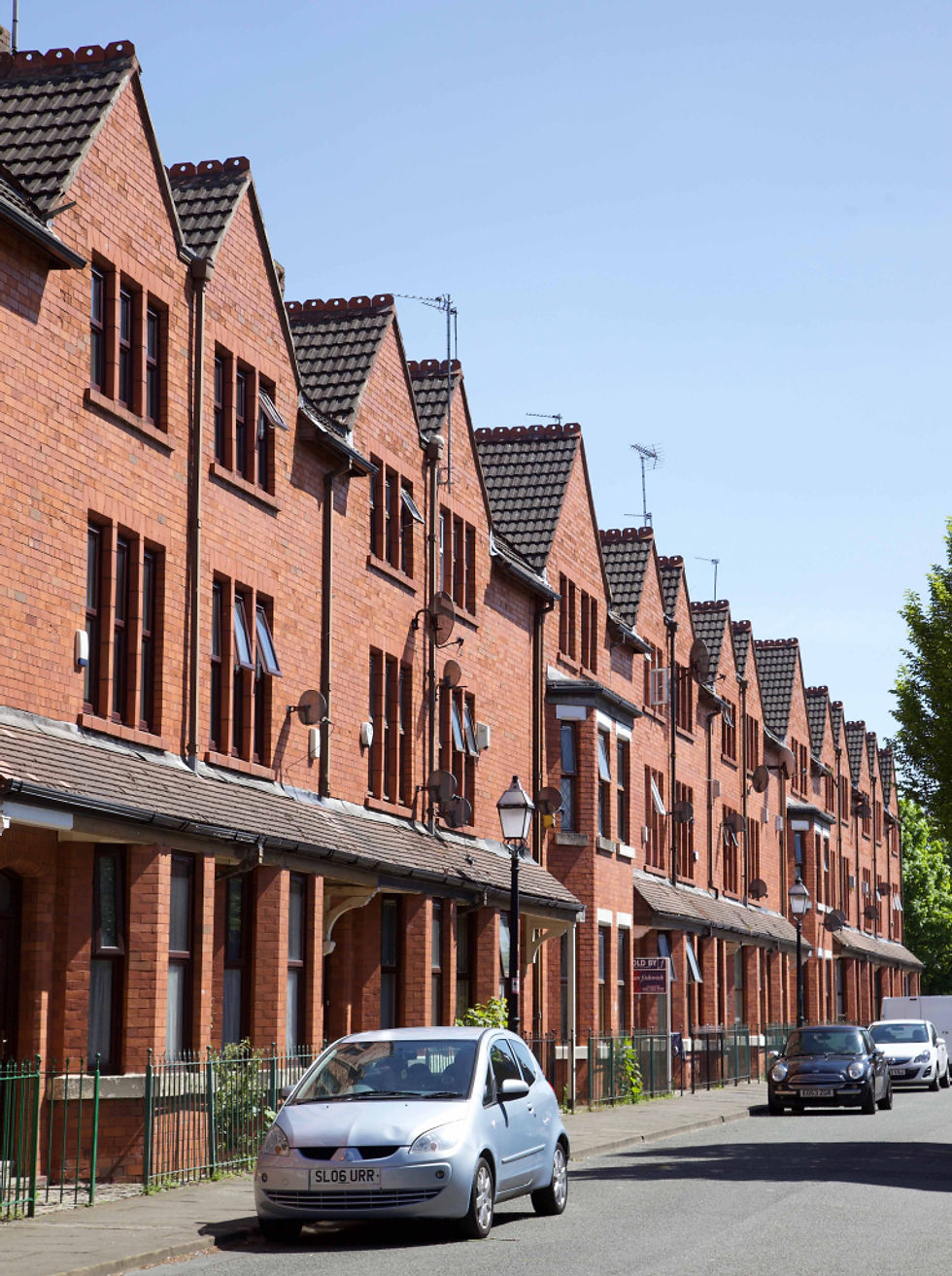
Terrace, Coronation Street, Ordsall, Salford

Terrace, Clowes Street, Gorton
Underground
I’ve always found the idea of a hidden city enticing and, during the course of my Manchester explorations, I wanted to find some of the city’s underground spaces. River culverts are fascinating because they often contain things left behind by urban development. The former cattle bridge that spans the walls of the Irk culvert under Victoria Station was particularly impressive: a relic of Manchester’s pre-industrial past, which might well date back to the 16th century, that has survived because it’s been repurposed as a utilities tunnel. Equally impressive, but in a different way, are the concrete ribs that support the Mersey culvert under the centre of Stockport, resembling as they do the vast mouth of a basking shark.

Former cattle bridge spanning the Irk culvert, Manchester, now used as a utility tunnel

Mersey culvert, Stockport, completed in 1940
Comments